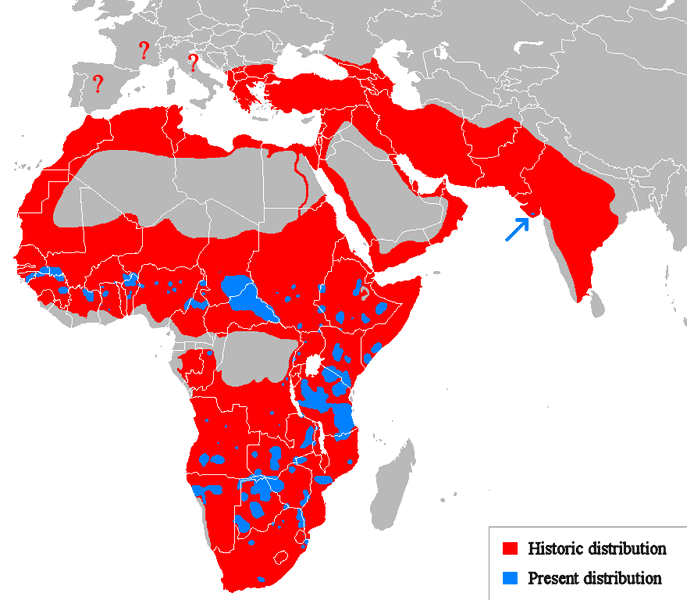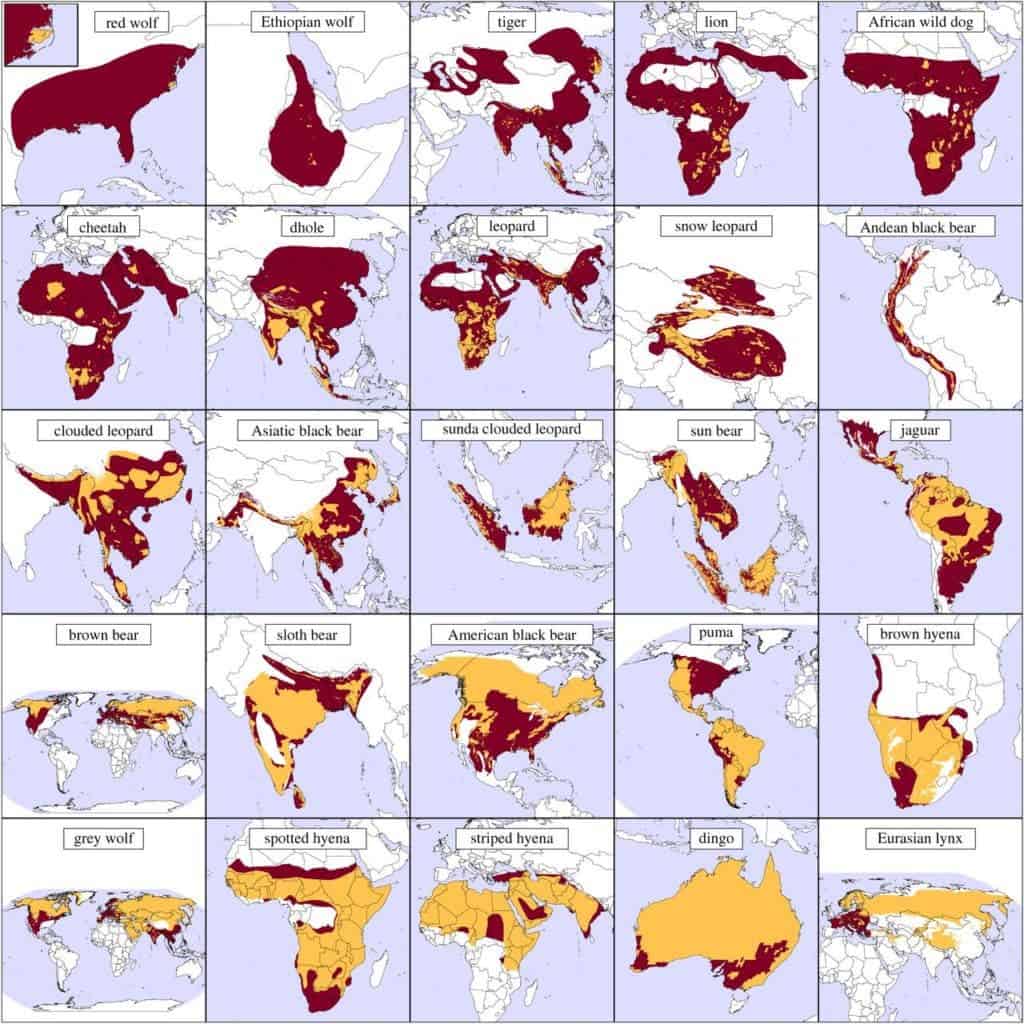Compared to 500 years ago, large carnivores like lions or tigers have lost more than 90 percent of their ranges, a new study found. While this trend is worrying, the good news is that conservation programs seem to work and a few large carnivores like hyenas seem to be doing better than others.
Move along
The team at Oregon State University analyzed maps and historical accounts for the preferred habitat of 25 large carnivores at around the year 1,500 AD. Today, you can find these animals in only a third of the land area they used to occupy 500 years ago. The explanation is quite easy to find: humans. There are 15 times more humans in the area than there were back then. There’s a very strong relationship between the contraction of large carnivore ranges and rural human population density, livestock, and cropland. All of this is taking a toll on the wild cats.
These large beasts depend on ample ranges to find food and to mate. Now that they occupy only a fraction of their former range, they’ve become very vulnerable to extinction. For instance, lion populations have been going down by about 30–50% over each 20-year period of the second half of the 20th century. Though not from the present study, this map that shows the lion’s historic distribution vs present day distribution is most illustrating (note that it’s the historic range for far earlier than 1,500 AD).

The Oregon State researchers found that 15 of the 25 species they studied had lost more than half their range. Large carnivores that have experienced the greatest range contractions include the red wolf (greater than 99%), Ethiopian wolf (99%), tiger (95%) and lion (94%). But not everyone is doing this poorly. The European lynx and Australia’s dingo have only lost 12 percent of their range while gray wolves lost 26 percent. Hyenas have been doing well too, given the circumstances. Striped, spotted, and brown hyenas lost 15, 24 and 27 percent of their range, respectively, as reported in the Proceedings of the Royal Society B.

The study notes that there have been optimistic developments where conservationists have organizes the reintroduction of large carnivorous wildlife. For instance, the return of wolves to Europe and North America is viewed by many as a success story. And, as is often the case when there are big losers, the little guys rise to the limelight. Lead author Chris Wolf told New Scientist that coyotes have seen a major range expansion.
“Ultimately, changes in species’ ranges are ongoing, dynamic processes and, in the face of newer threats like anthropogenic climate change, it is critical to continue to monitor large carnivore ranges to ensure the future of these species. Our analysis serves as a starting point for this by providing an accurate measure of the historic and current status of the world’s largest carnivores,” the researchers concluded.
Was this helpful?